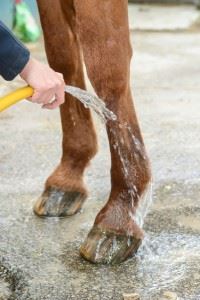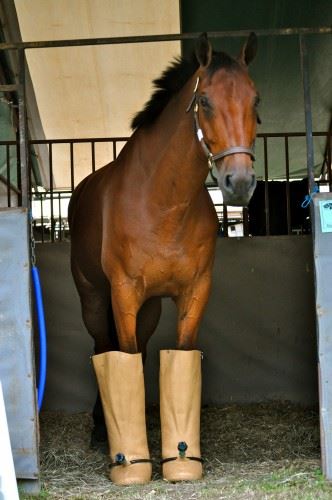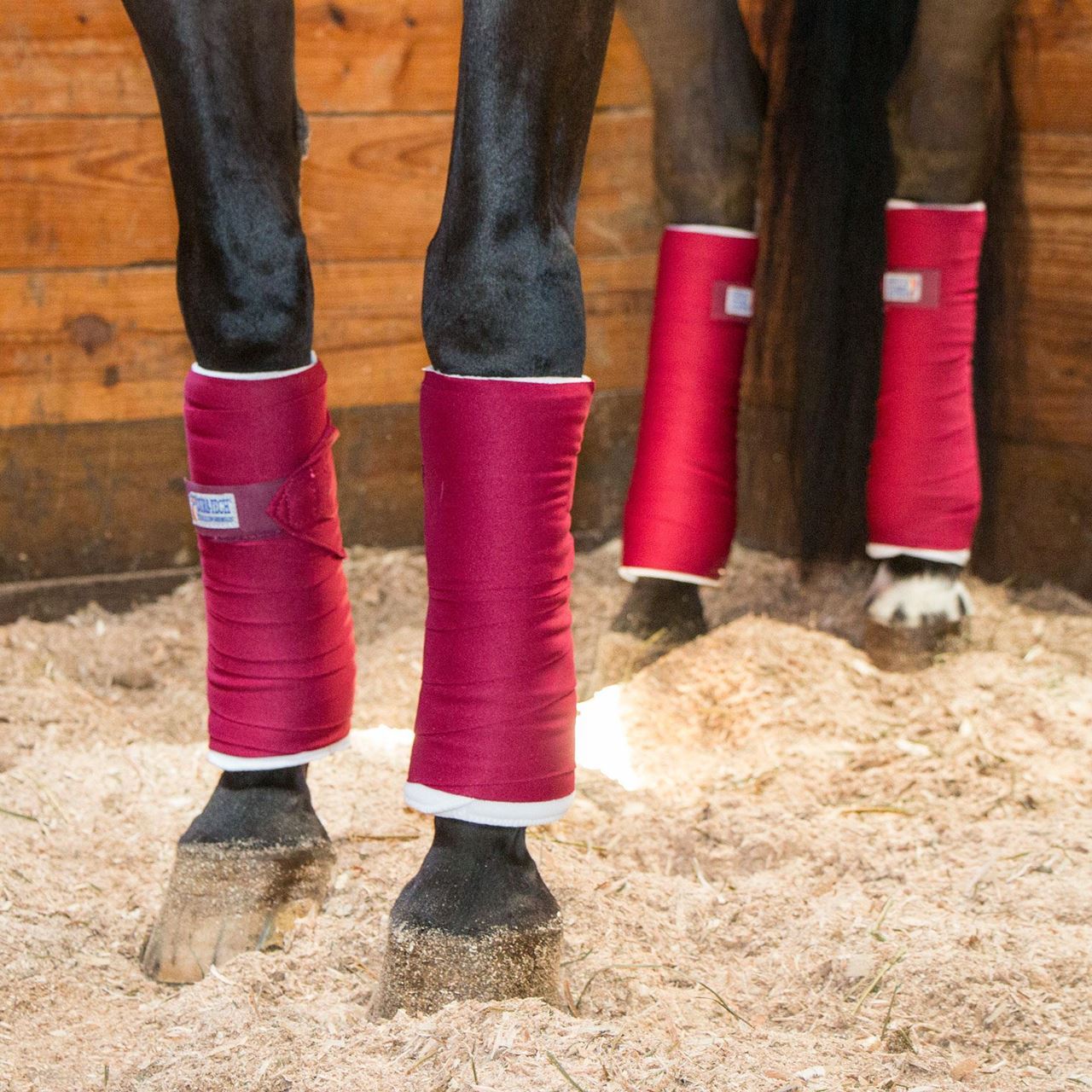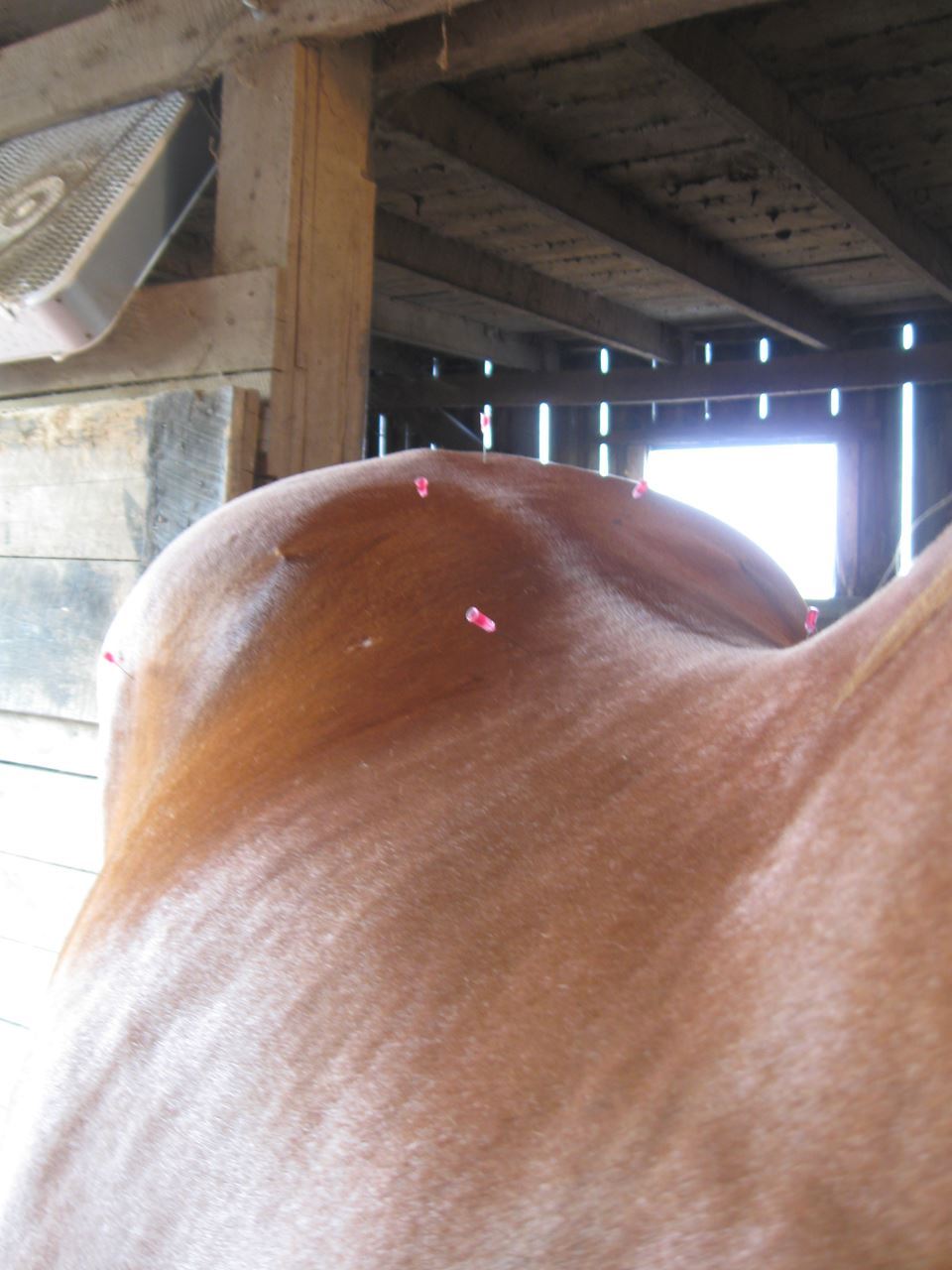Every horse owner would like to amount of vet bills they incur, but sometimes that’s not an option. While no one would ever expect you to stitch your horse at home or diagnose his niggling lameness, there are some things that owners and riders can do at home in an attempt to prevent unnecessary vet calls.
By Sarah E. Coleman

Dr. Heather Woodruff, co-owner of Foxwood Equine Sports Medicine with Dr. Holly Schmitt (Fox), grew up in Vermont riding hunters, jumpers, eventing and dressage. She graduated from the University of Florida College of Veterinary Medicine and has been practicing in Lexington since 2009, when she moved here to complete a Sports Medicine Internship at Hagyard Equine Medical institute; she and Dr. Schmitt Fox opened Foxwood Equine in 2014.
Foxwood Equine focuses on sports medicine and acupuncture, also offering high-level lameness diagnostics and treatments to horses that are in elite levels of competition all over the United States. Dr. Woodruff is called in to treat horses for both acute lamenesses and also for preventative and therapeutic care. While there is no replacement for skilled veterinary care, there are a few at-home treatments Dr. Woodruff recommends to keep high-level athletes feeling their best.
The Specifics for Keeping Horses Sound
The No. 1 tool to keeping a horse sound, Dr. Woodruff says, is to keep him fit for his specific job. “It doesn’t matter if the horse is a jumper, reiner, eventer or dressage horse. At the end of the day, the horse needs to be fit for its job. I am a big fan of lots of flat work, long-and-low work and even trot sets in a big field. This is all depending on the horse and its day-to-day environment. Fitness is not just for cardiovascular activity, it’s also for making sure the horse’s tendons, ligaments and joints are all is proper condition to do the job.”
Another key to keeping horses fit and in competition shape is hands-on knowledge of the horse’s legs and body. “If there is an abnormal swelling, it’s important to know if that is new or old,” explains Dr. Woodruff. Knowing immediately if a new bump or bruise has arisen can minimize the chance of downtime during competition season as treatment can be started almost immediately.
Don't Overdo It

While many riders (especially after cross country) will ice their horse’s legs, over icing can be a concern. Icing a horse’s legs for too long can cause localized frostbite. For this reason, Dr. Woodruff recommends cold hosing over icing. With cold-hosing, there is no way to damage the legs.

Another option to provide support for a horse that has had a strenuous workout is to wrap him to provide some additional support to a horse’s legs, especially after extreme exertion. Cold-hosing his legs and then wrapping him correctly with standing bandages and wraps is a non-invasive way to provide a bit of additional help. Some riders use Surpass, a popular NSAID, under wraps, but Dr. Woodruff warns that this prescription medicine should be used with caution if the horse is on additional anti-inflammatories; using Surpass may also mask the beginning of an injury. Because of this, Dr. Woodruff recommends using poultice or liniment under a bandage unless Surpass has been specifically prescribed by a veterinarian.
Also, “learning acupressure or massage is useful to help relax sore muscles, as well as recovery from injury,” Dr. Woodruff explains. No matter what riders or owners choose to do (or not do) to help support their athlete, “Being able to recognize when the horse may need a little extra cool down and attention to the muscles is important to keeping your horse sound and happy!”
And if He's Already Injured....
While modalities like cold hosing, wrapping and massage can be used in an effort to prevent injuries, they are also helpful when dealing with a horse that has injured himself. “Depending on what injury, we may recommend any or all of these modalities [icing, cold hosing, etc.]. Every injury is specific to the horse and needs to be treated as an individual, with treatment depending on multiple factors, including type of injury, prognosis, competition level and attitude of each horse. [For] One soft-tissue case, we may recommend intra-lesional therapy, whereas the next we may recommend shockwave and rest.” Proper bandaging is also key in tendon and ligament injury, both in the effected leg and the opposite limb.
Every injury is specific to the horse and needs to be treated as an individual, with treatment depending on multiple factors, including type of injury, prognosis, and attitude of each horse.

One modality some people still overlook (or don’t believe in its efficacy) is acupuncture, Dr. Woodruff notes. “There are so many things we can help with acupuncture. With no medication [steroids, anti-inflammatories or synthetics], we can do so many things! [We can] Help with chronic pain, help a mare regulate her cycle to breed or help the old retired horse be more comfortable in the field. We can help the horse that has anxiety leaving the barn and the horse that does not want to do a proper lead change.”
With all of the issues that can be helped with acupuncture, as well as how minimally invasive it is, it’s surprising that there are still owners and breeders who are reluctant to try it.
“Most of our sport horses work very hard for us, and we try to make them feel better and do the best possible job they can do,” Dr. Woodruff explains.
So, if preventative care is not working and your horse has to see a vet, it’s worthwhile to ask what treatment plan is best for him or her, and to be open-minded if your vet suggests a modality you are unfamiliar with!
